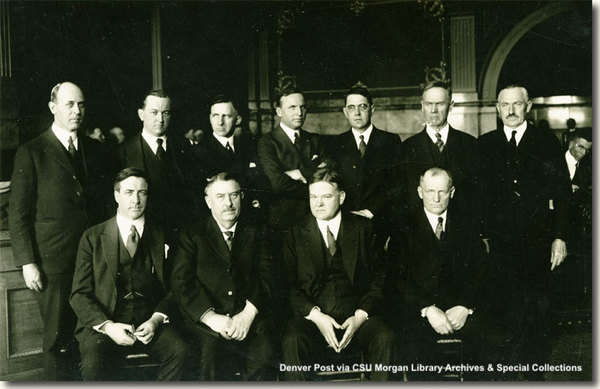Dublin Core
Title
Description
In 1922, seven states in the American West -- including Utah -- signed the Colorado River Compact to determine how to distribute among them the waters of the Colorado River. This agreement proved to be more controversial than expected and has left us with a mixed legacy.
The first issue was the water itself: Compact signatories agreed to split the Colorado using an estimated annual water flow of 17.5 million acre-feet divided somewhat evenly across the Upper and Lower Basin states. But this estimate was made by the US Reclamation Service during a period when the river raged higher than any point in its recorded history. Using overly optimistic estimates to establish Basin allotments led to disputes that affect us today.
Second, the process of actually ratifying the Compact was difficult. Some states -- such as Utah -- signed the agreement right away. But Arizona and California couldn't agree how to divide water granted to the Lower Basin. For six years the Compact languished until the US Congress intervened with the 1928 Boulder Canyon Project Act that sought to settle the feud between Arizona and California and make the Compact legally binding. The Act authorized a revolutionary project known as Hoover Dam, which created Lake Mead Reservoir. At that point, Hoover Dam was the largest on Earth, and its hydroelectric power spurred population growth, built industry, attracted tourism, and provided air conditioning in one of America’s most inhospitable environments. Still, Arizona did not officially sign the Compact until 1944. Yet, as Utah and neighboring states watched tremendous growth driven by Hoover Dam, they saw a model for what would become controversial reclamation projects in the Upper Basin.
Aside from interstate squabbles, the Colorado River Compact had at least one more troubling aspect. The original 1922 Commission excluded key users of the river: Native American tribes and Mexico did not have seats at the table. After years of conflict, an international agreement in 1944 reserved 1.5 million acre-feet of Colorado River for Mexico. But tribes are still negotiating for their rights to the water.
Creator
Source
_______________
See Jim Kichas, “The Law of the River: Compact and Development,” and “The Law of the River: Developing the Upper Basin,” December 2021 Utah Division of Archives and Records Service, accessed January 2022; Marc Reisner, Cadillac Desert: The American West and Its Disappearing Water (New York: Penguin Books, 1993); Donald Worster, Rivers of Empire: Water, Aridity, and the Growth of the American West (New York: Oxford University Press, 1992).

